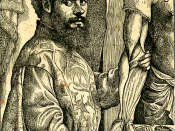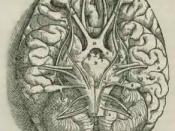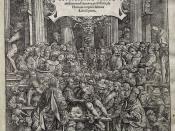Andreas Vesalius was born during the Renaissance ÃÂ an era renowned for its emphasis of humanism and resurrection of classical texts. During this time period, classical texts were used in all areas of the academic world, including science. When Vesalius entered the academic world, he attended some of the top medical universities in Europe. During his time in university, Vesalius chose to ÃÂdevote much effort into the investigation of the structure of man.ÃÂ He was exposed to many great scientific texts, works and lecturers ÃÂ but, unsatisfied with course texts and lessons, he decided to enter his own realm of study. Through his own work, Vesalius reinvented the study of anatomy by focusing primarily on empirical evidence in researching the physical world; created De Humani Corporis Fabrica, a monumental text which corrected the previous understandings and concepts of anatomy that had been held for centuries before; as well as the publication of collections of remarkable anatomical illustrations, all of which added new methods to scientific study during the Renaissance.
Anatomy was one of the course requirements for science students during the Renaissance. Although Vesalius would later be known as one of the greatest anatomists the scientific world has ever known, in these early days of study he was quite dissatisfied with the course ÃÂ primarily unhappy with the lack of hands on interaction and dissection. Anatomy lecturers of this time period would traditionally read and instruct through the work of Galen. During this time period, Galen was known as infallible. Everything he did and said was taken as truth and was rarely ever questioned ÃÂ so it was quite common for lectures to rarely involve graphic illustrations, dissection, or any real physical proof to accompany the theory. Later on, in some of VesaliusÃÂ publications he indicates that he had not...


